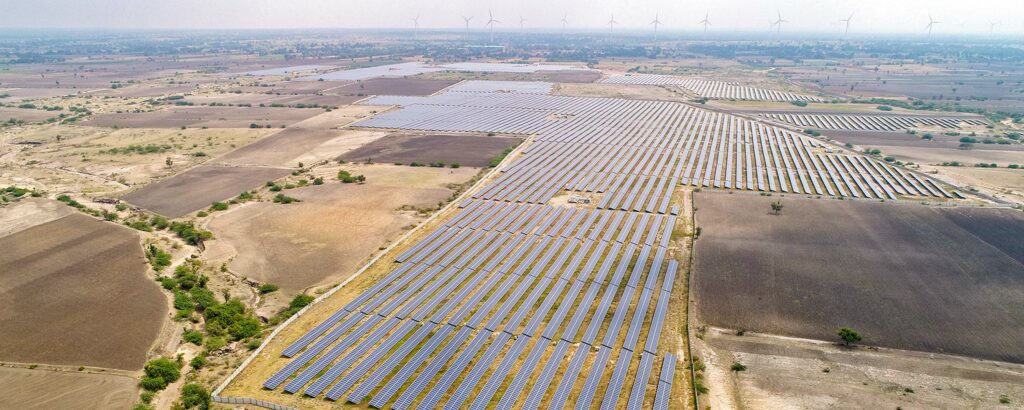The role of bonds in transforming infrastructure for net-zero
Massive investment is needed in infrastructure to achieve the transition to clean energy and create resilience against the impacts of global warming. The scale of investment – as much as $9 trillion per year – exceeds the capabilities of public finance and will rely on aligning private sector financing. Green or climate bonds seem an obvious instrument for the task – are they the killer solution?
Financing — Global

The infrastructure of our cities, the transport networks we use to connect them, and the range of goods that we enjoy within them represent a huge expanse of economic activity. Such activity can be categorized by sectors and subsectors, the breadth of which is so enormous it details the extraordinary progress of modern civilization. At the heart of it all, however, lies a common force – finance.
The idea that finance is the “mother sector” or gateway of all sectors is why it can be looked upon as a powerful force for fighting climate change – the challenge of a generation. Huge debt instruments such as bonds, which globally have a market volume of around USD 130 trillion, are responsible for a large part of the financing of our world economy. This activity, in turn, has been increasingly synonymous with climate degradation, particularly since the Industrial Revolution.
The birth of green bonds therefore marked an innovative way to reverse the relationship between capital outlay and climate disarray. The market, opening in 2007 following the issuance of the first ever green bond by the European Investment Bank, employs a set of principles laid out by the International Capital Markets Association (ICMA) to ensure capital is going to climate-aligned causes.
Around USD 3.2 trillion of green bond volumes have now been raised with the green debt market snowballing to an impressive growth rate of over 50% in the five years between 2017 and the start of 2022. Issuance has since slowed alongside a slump for the global bond market as the macroeconomic landscape has shifted. Though the market remains small relative to the size of the global bond market, it has progressed quickly and will only become more prominent as the years unfold.
Bonds of varied colors
Nothing less than an overhauling of most of the global economy will be needed over the coming decades. McKinsey & Company estimates that the investment in new infrastructure and systems needed to meet international climate goals could be USD 9.2 trillion annually between now and 2050. Green bonds offer a way of incentivizing and measuring this green investment.
In recognition of the range of things issues that need finance, the green market has been joined by social, sustainability, sustainability-linked, and transition bonds (collectively GSS+), to tackle a range of climate investment challenges and the UN’s Sustainable Development Goals. The combined GSS+ issuance hit five trillion in June 2023.
Issuers of these bonds include around 50 national governments and countless corporates including big names such as Apple and Volkswagen. But, as with every story, the reality isn’t a clear and courageous march to climate salvation. Rather, it is one of questions, anxiety, and confusion. At the center of the green bond story are:
- questions of whether these instruments really are impactful
- anxiety over greenwashing
- confusion about how these issues can be addressed
Allaying concerns through standard setting
Greenwashing occurs due to lack of ambition, a lack of transparency, or a combination of the two. A lack of ambition entails proceeds being committed to projects that are not truly green. International targets on climate change, as expressed in the Paris Agreement, represent a consensus on ambition for environmental action – namely, to reach net zero by 2050. Self-labeled green bonds that do not align with these plans can be considered greenwash. To be able to verify the integrity of green bond commitments, issuance must be transparent. Reporting is a key means to achieve this. Overall, greenwashing has been a rarity, as standards and policy have developed to guide the market.
The Climate Bonds Initiative, an international not-for-profit organization that has been influential in the rise of green bonds, has developed a standard on green bonds to combat greenwashing. This Climate Bonds Standard complements the ICMA’s Green Bond Principles that guide the structure of green bonds, with further detail on sector activities that align with the Paris Agreement. This provides a common language on green investment, promotes market confidence, and has influenced the development of several national taxonomies – policy regulation enacted to guide countries’ green finance markets.
Overall, the market’s ambition appears solid. The majority of green issuance is aligned with the Paris Agreement and greenwashing is a minority. Of the USD 3.2 trillion volume of green bonds captured by Climate Bonds Initiative’s market intelligence, 75% meets best practice standards. As for the remaining 25%, the reason for their exclusion was either proceeds not being Paris-aligned, or poor reporting standards that made it difficult to discern whether the issuance was Paris-aligned or not. As the market matures, and taxonomies continue to spread across each nation, it is envisaged that volumes meeting best practice will rise even higher.
Nurturing green bond growth
The strong investor appetite for green debt proves that investors are looking for climate solutions. Evidence of this appetite appears in pricing: issuances are often oversubscribed and investors pay a premium (so-called greeniums) when purchasing these debt products. Investors are keen on green bonds as they offer more transparency than vanilla equivalents as to what their capital is being used for. Investors are also aware of the global push for net zero, are keen to diversify their portfolios, and know that these assets perform well and hold their value in the secondary market.
Writing now, in 2023, the market still has a long way to go. It has produced standards and principles that act as a shopping list for a green future and has raised trillions in climate capital. However, the journey needs to accelerate its progress as time ticks away on the ever-closing window of opportunity to avert climate catastrophe. The Climate Bonds Initiative is calling for USD 5 trillion in green issuance to be raised annually by 2025.
Governments, finance, and corporates are largely enthusiastic on the green finance movement and are keen to play a part in its development. If we can shift this enthusiasm forward and land at urgency, green finance will find itself credited as a key force for change in the climate fight.





